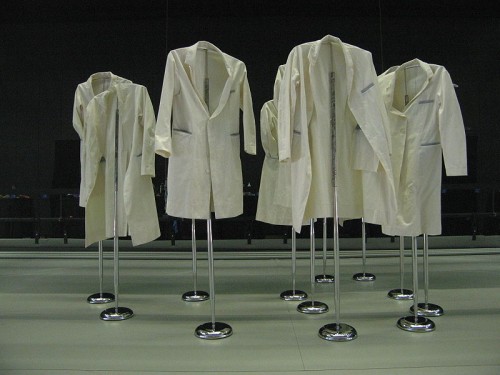Gay abortion doctor who wants to adopt
 Doing a story on abortion doctors must be terribly challenging, since it would be impossible to create a sweeping generalization of religious, political, ethical views and backgrounds. The Toronto Star tackles this challenge in a lengthy piece exploring the dimensions of trying to be an abortion provider. The hook is really fascinating: it begins with a gay doctor, Dr. Evan James, who never wavered in his determination to become an abortion provider.
Doing a story on abortion doctors must be terribly challenging, since it would be impossible to create a sweeping generalization of religious, political, ethical views and backgrounds. The Toronto Star tackles this challenge in a lengthy piece exploring the dimensions of trying to be an abortion provider. The hook is really fascinating: it begins with a gay doctor, Dr. Evan James, who never wavered in his determination to become an abortion provider.
He found that he enjoyed the work and was not put off by a woman's tears or the tissue he extracted from her womb.
Nor did he fear the violence--bomb threats, stabbings, sniper shootings--that for years has stalked abortion doctors in North America.
Only when his personal life was thrust up against his professional beliefs was his firm stance on abortion shaken.
James and his partner desperately wanted to adopt a child.
The story goes on to say that James "began to see shades of grey instead of just black and white." There really is a lot to like in this piece by Megan Ogilvie. There's some basic info, like how about one in four Canadian women will have an abortion in her lifetime. Telling a story through one doctor's unusual situation makes it even more interesting.
However, you can guess GetReligion's complaint. There isn't a single mention of religion or faith. Since people's views on abortion are often connected to their religious beliefs (or lack thereof), you would think that could make the article even more interesting.
As James's desire to have a family deepened, he began to think an uneasy thing: how could he terminate pregnancies when each abortion meant there would be one less child for adoption?
He also wondered how he would explain what he did for a living to his adopted child. After all, wouldn't his son or daughter have been born because the birth mother had not chosen abortion?
The writer shows how the decision to become an abortion doctor can be quite challenging for some. "They must also find ways to reckon with the ethical and personal dilemmas that can accompany their work," she writes. We're left wondering what those ethical dilemmas are with little explanation.
James remembers feeling a gentle shock each of those first few times [watching an abortion]. But even after viewing a second-term abortion, he was not haunted by what he saw.
"During the direct examination, you might see an arm or an umbilical cord or, even, the body. It doesn't all come out in one piece. With your imagination, you can see that it resembles a human.
"I could understand how some people would be turned off by that or very moved by that."
The writer paints most of the downsides to being an abortion doctor is being targeted by violent groups. Perhaps she could have quoted some doctors who chose not to be an abortion doctor for ethical reasons. Further, are there emotional or perhaps financial disadvantage to being an abortion doctor? For example, an earlier New York Times magazine piece suggested that malpractice insurance costs $10-$15,000 a year.
The story later describes what takes place during an abortion procedure, which seems pretty rare but needed in a story like this. It's clear that second-trimester abortions are more disturbing to this doctor than first-trimester ones.
But James, who knows only one young doctor in Ontario who intends to do second-term abortion, is not troubled by this. He focuses his attention on the woman in front of him.
"The biggest risk factor for a second-trimester abortion is lack of referral for a first-trimester abortion," says James. "I see second-trimester abortion as a bit of a tragedy, because to me it means the medical system has failed. Then it becomes our job to fix it."
The story's tension continues until we find out that he has decided to remain an abortion doctor.
One year after questions started to swirl through his mind, he has made his choice.
James will be an abortion doctor.
Not only that, but James plans to do second-trimester abortions as part of his practice. He will step to the very front line, the place where there is greatest need--and greatest risk.
We're left feeling pretty warm and fuzzy about James' decision, even though it was supposedly tough.
More questions might come to him, and doubts may again creep into his mind. Already he wonders whether he should be open and proud of being an abortion doctor.
James accepts that he has tough road ahead.
He hopes his child will be proud of him for taking it.
The slightly one-sided look story still offered some good information and an intriguing hook. We're still left wondering whether his faith (or lack thereof) play any part in what he sees as ethnical or unethical and why being an abortion doctor is so complex for him.